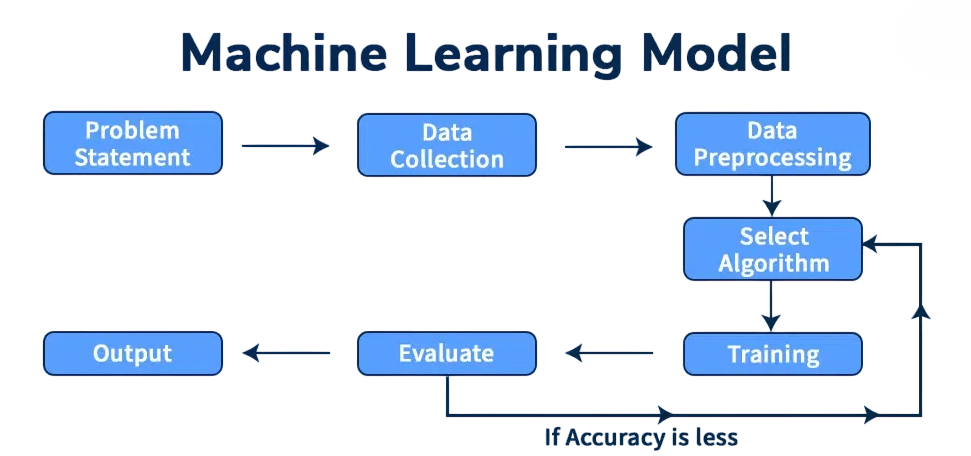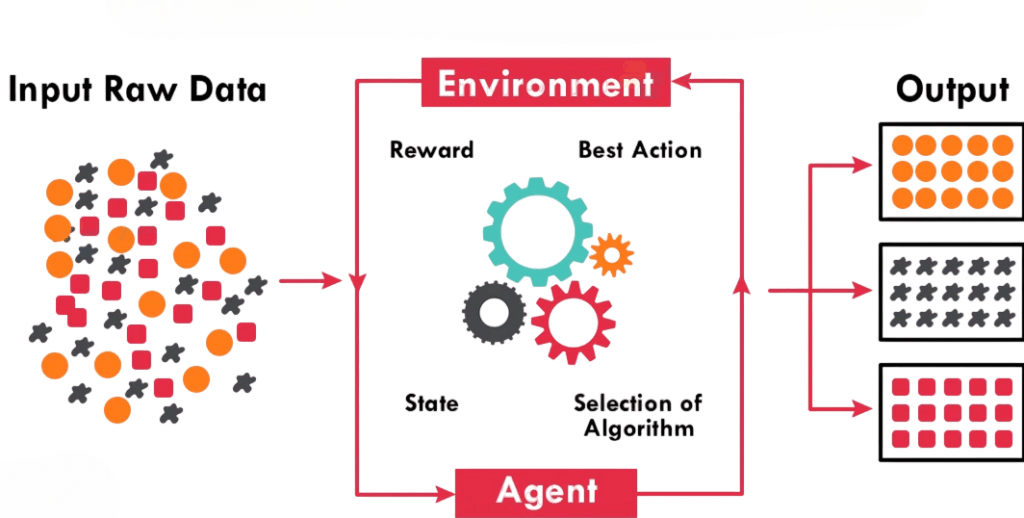
- Overview of Machine Learning
- Supervised Learning Models
- Unsupervised Learning Models
- Semi Supervised Learning
- Reinforcement Learning
- Decision Trees and Random Forests
- Support Vector Machines (SVM)
- Neural Networks
- Ensemble Models
- Model Selection and Evaluation
- Future Trends
- Conclusion
Overview of Machine Learning Models
Intelligence that changes how computers process and understand information. By developing smart algorithms that learn from data, Machine Learning Training allows systems to make intelligent decisions without direct programming. These technologies are good at finding meaningful patterns, adapting continuously, and drawing insights from various datasets.

They power recommendation engines, voice assistants, fraud detection systems, and autonomous vehicles. Machine learning has transformed many areas of technology. Its key features include learning from data, where algorithms improve their accuracy through experience, and the ability to make predictions on new information. Originating from pattern recognition and computational learning theory, ML shows the tremendous potential of AI to create intelligent, self-improving systems that tackle complex challenges with increasing skill.
Ready to Get Certified in Machine Learning? Explore the Program Now Machine Learning Online Training Offered By ACTE Right Now!
Supervised Learning Models
Supervised learning is a strong machine learning method that uses labeled datasets. In these datasets, input features match their output labels. A powerful tool in supervised learning is the Support Vector Machine (SVM) Algorithm. This method has two main types of predictive modeling, classification, which predicts specific categories like whether an email is spam, and regression, which estimates continuous numbers like housing prices. Practitioners use a variety of algorithms to make these predictions. These include linear regression, logistic regression, decision trees, k-nearest neighbors, support vector machines, and neural networks. By using these techniques, data scientists create robust models that turn raw data into useful insights. This helps them make accurate predictions across different fields and tackle real-world problems effectively.
Unsupervised Learning Models
Unsupervised learning models involve unlabeled data. The system tries to find hidden patterns or intrinsic structures.
Types:
- Clustering: Group similar data points (e.g., K-means, Hierarchical Clustering).
- Dimensionality Reduction: Simplify data while retaining its structure (e.g., PCA, t-SNE).
- Association Rule Learning: Discover relationships between variables (e.g., Apriori).
Use Cases:
- Customer segmentation
- Market basket analysis
- Anomaly detection
- Reduces labeling cost
- Often improves accuracy over unsupervised methods
- Useful for web content classification and bioinformatics
- Margin: Distance between data points and the hyperplane
- Kernel Trick: Allows for non-linear classification
- Linear
- Polynomial
- Radial Basis Function (RBF)
- Text classification
- Image recognition
- Bioinformatics
- Bagging: Builds independent models and combines their predictions (e.g., Random Forest).
- Boosting: Builds models sequentially, where each model learns from the errors of the previous (e.g., Gradient Boosting, XGBoost).
- Stacking: Combines multiple models via a meta-model.
- Reduces variance and bias
- Improves accuracy
- Accuracy
- Precision
- Recall
- F1 Score
- ROC-AUC
- Mean Squared Error (MSE) for regression
- Train-Test Split
- k-Fold Cross-Validation
- Stratified Sampling
- Automated Machine Learning (AutoML): Platforms like Google AutoML and H2O.ai automate the process of model selection, feature engineering, and tuning.
- Federated Learning: Enables decentralized training across multiple devices while preserving data privacy.
- Explainable AI (XAI): Focuses on making model decisions interpretable and transparent, crucial for industries like healthcare and finance.
- TinyML: Brings ML models to edge devices with constrained resources, useful for IoT applications.
- Multimodal Learning: Combines text, images, and speech in unified models for richer understanding (e.g., GPT-4o).
To Explore Machine Learning in Depth, Check Out Our Comprehensive Machine Learning Online Training To Gain Insights From Our Experts!
Semi Supervised Learning
Another widely used approach is Decision Trees in Machine Learning. Semi-supervised learning falls between supervised and unsupervised learning. It uses a small amount of labeled data and a large amount of unlabeled data. Semi-supervised learning is valuable when labeling is expensive or time-consuming (e.g., medical image annotation).
Benefits:
Reinforcement Learning
Reinforcement Learning (RL) is an interesting approach based on behavioral psychology. It involves an intelligent agent that interacts with its environment to learn the best decision-making strategies. At its core, RL has the agent exploring different actions within a specific context.

The agent receives feedback through rewards or penalties that guide its learning process. The main parts of RL are the agent (the learner), the environment, the available actions, and the reward signals that influence behavior. This powerful method has shown great adaptability in various fields. It is used in advanced game-playing systems like AlphaGo and in areas such as robotics, autonomous vehicle navigation, and resource management. By improving its strategy through repeated interactions and maximizing rewards, RL helps machines develop smarter and more adaptable behaviors that resemble human learning processes.
Decision Trees and Random Forests
Decision Trees are powerful Machine Learning Models that function like decision-making flowcharts. Machine Learning Training uses tree-like structures that split data based on feature values to make accurate predictions. These structures include nodes for features, edges for decisions, and leaves for final predictions. Their main strength is their clear interpretability and flexibility since they can handle both numerical and categorical data. However, Decision Trees have some weaknesses, especially their risk of overfitting. To solve this problem, Random Forests come into play as a technique that combines multiple decision trees trained on different data subsets. By using majority voting for classification or averaging for regression, Random Forests improve predictive accuracy and lower the chance of overfitting, providing a strong and dependable Machine Learning Models that addresses the limitations of individual decision trees.
Looking to Master Machine Learning? Discover the Machine Learning Expert Masters Program Training Course Available at ACTE Now!
Support Vector Machines (SVM)
A foundational concept in AI is Pattern Recognition and Machine Learning. SVMs are powerful for both classification and regression problems. They work by finding a hyperplane that best separates the data into classes.
Key Concepts:
Types of Kernels:
Applications:
Neural Networks
Neural networks are advanced computing systems inspired by the complex neural structure of the human brain. They consist of three basic layers: input, hidden, and output. These computational models process information using interconnected nodes that perform weighted input calculations and apply non-linear activation functions. To explore cloud-based machine learning infrastructure, refer to the Overview of ML on AWS. Developers design various neural network architectures, including Feedforward, Convolutional (CNNs), and Recurrent (RNNs) networks, to perform well in specific areas like image recognition, sequential data processing, and complex pattern identification. Their impressive flexibility allows for innovative applications in many fields, such as speech recognition, natural language processing, and advanced image generation technologies. By imitating the brain’s learning methods, neural networks have become powerful tools that constantly expand the limits of artificial intelligence. They provide exceptional computing power and smart problem-solving approaches.
Preparing for Machine Learning Job Interviews? Have a Look at Our Blog on Machine Learning Interview Questions and Answers To Ace Your Interview!
Ensemble Models
Ensemble learning combines multiple models to produce better performance than any single model.
Common Techniques:
Advantages:
Model Selection and Evaluation
Choosing the right model involves experimentation and evaluation using statistical metrics and cross-validation techniques.
Key Metrics:
Validation Techniques:
Model evaluation ensures the model generalizes well and doesn’t simply memorize the training data.
Future Trends
To stay ahead in the AI landscape, explore the latest Machine Learning Tools. Machine Learning continues to evolve rapidly. Here are some trends shaping its future:
Conclusion
Machine Learning Models is a transformative force driving innovations across industries. From recommendation systems and autonomous vehicles to healthcare and finance, it’s hard to find an area untouched by ML. Machine Learning Training involves mastering supervised, unsupervised, and reinforcement learning, understanding model architecture like decision trees and neural networks, and applying correct evaluation techniques key steps to becoming a successful machine learning practitioner. As ML continues to evolve, keeping up with trends like AutoML, XAI, and TinyML will be crucial. Whether you’re a beginner or an advanced professional, continuous learning is the only constant in the journey through machine learning.



